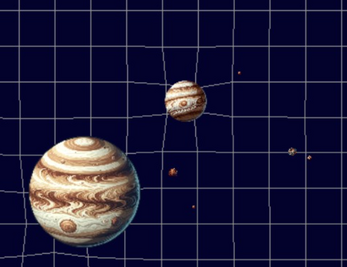Singulario
Inspiration
We were heavily inspired by the hit game agar.io. We wanted to create a visualization where n-bodies interact with each other with gravitational forces. In addition, we have added a fun feature: eating other bodies and claiming their mass, increasing your gravitational pull.
What it does
Singulario is an n-body visualization. It provides an interactive environment where the player follows a celestial body in space. There are many parameters that can be changed to improve the playing experiment such as the gravitational constant and the time passing. It is visually pleasing with its sprites, smooth movement, and space-time curvature. It is a 0-1 player game: it plays itself while granting the player the ability to manipulate their surroundings.
How we built it
We have created bodies with a certain mass. With this value, we are able too calculate the gravitational force that is applied to each object and thus their acceleration. With pygame, we are able to display their position in relation to the player.
Challenges we ran into
We had multiple problems with git and tracking the player and keeping him centered. We also ran into optimization issues with the large number of calculations.
Accomplishments that we're proud of
We were able to optimize our application and simultaneously display an impressive amount of particles. Our end result is complete, functional, aesthetically pleasing and accurate.
What we learned
We've learnt many game making concepts such as a following camera and intelligently spawning foreign objects. We've also learnt optimization techniques in order to improve the script's performance.
What's next for Singulario
Singulario has many ideas for future implementations such as different behaviors for each celestial object for more variety for an even more realistic visualization and provide endless entertainment and learning value.
Generative AI
DALL-E was used to generate beautiful sprites used for our game. Work in progress: Integration of GPT-4 API for AI-generated fun facts about each category. For example, "The skyscraper-sized asteroid Apophis, once considered a potential Earth impactor, will sweep by our planet in 2029 closer than some geostationary satellites, offering scientists a rare opportunity for up-close asteroid study without it posing any real danger!"
Easter Eggs
With Hawking radiation, playing the game for a googol years would make the black hole decay.
